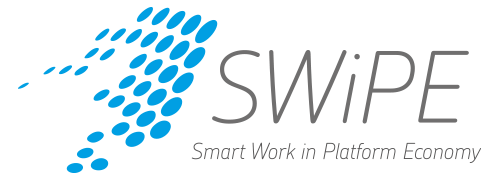Working time is an important concept that functions as a measure of economic value both for employees and employers. The employee is paid for the work they do while the employer wishes to evaluate how much time was used to do the work, as that is tied to the resources they need. Working time is a hot topic: Jukaa Ahtela has prepared a report for the Ministry of Economic Affairs and Employment titled: “Työaika, tietotyö ja tulevaisuus: esimerkkinä ohjelmistoala” (Trans: Working time, Knowledge Work and the Future: Example; the Software Industry) – that report is part of preparations for updating the working hours act. Also, most workers will need to consider their options and express their opinions considering the changes brought about by the ‘competitiveness agreement’. It is clear that working time is not an uncontested part of working life neither in Finland nor abroad.

Working time in the platform economy however, requires a new approach. How would working time be evaluated if it happens away from a particular workplace or it is tied to oft changing contracts? And as an echo from the past: who monitors the platform economy worker when there are many contractees and many employers? And what happens when these employers all represent different fields, different collective agreements and different countries? The platform economy can even include work that may not feel like work; such as selling one’s own products to a network of friends or income arising from a beloved hobby. An example of this might be autumnal mushroom hunters selling their pickings to their Facebook friends.
What I would like to highlight here is the individual; whether they’re called the employee or a platform economy producer. The individual is a whole that needs a livelihood, meaningful content and the possibility to rest. Sleep and recovery play an important role regardless of whether one works as a salaried employee, entrepreneur or in the platform economy. To sleep well and recover properly one needs to feel content and fulfilled and to have the possibility to detach from work matters and stressors. Do we make sure of this in the platform economy by measuring working time? Probably not. Instead we need the opportunity and the skills to estimate our own time use, and its connection to wellbeing, so that we might recover properly. As individual we are different and in different stages in our lives and so the way we use time also differs. For one sport may be an important way to detach and recover, for another work itself may be very meaningful and work and free time do not need to be kept separate. For yet another the need for clear separation between work, free-time and rest may be acute because of children’s day care needs setting the boundaries. All well and good. This works perfectly well when the individual feels good and their situation is in balance. If however, the experience is categorised by stress, exhaustion, worry and constant pressure to perform, it is time to stop and evaluate that experience.
Evaluating time use is essential in the platform economy. It remains to be seen whether we’ll see any guidance in this regard in the updated working time act. Regardless, help for time use planning is already available through mobile apps (such as Aikani or Time Tracker), from occupational healthcare or from one’s superiors (if one has). The purpose of evaluation is to see whether time available for work, for free-time and for rest are in balance. Evaluating your own needs doesn’t require anything special; a piece of paper or an electronic calendar are enough: follow your time use over a few weeks and mark for each day the time you spend for work, free-time and sleep. Use green for those times and days that feel good and you’re not stressed. Then use yellow for the times that are challenging but manageable and red for those that are hard and drain you. Comparing how much green, yellow and red your calendar has will tell you how you’re doing. If you have a lot of yellow and red, ask yourself if there’s anything you could do? What would that entail, and how long would it take to accomplish? Do you perhaps need help? Change something and then follow your time to see if things improve. If you’ve got more green and yellow – things are looking up. Give it a go!
The author of this bolog post Annina Ropponen is a senior researcher at the Finnish Institute of Occupational Health, FIOH. you can read more about Annina and her work here.
